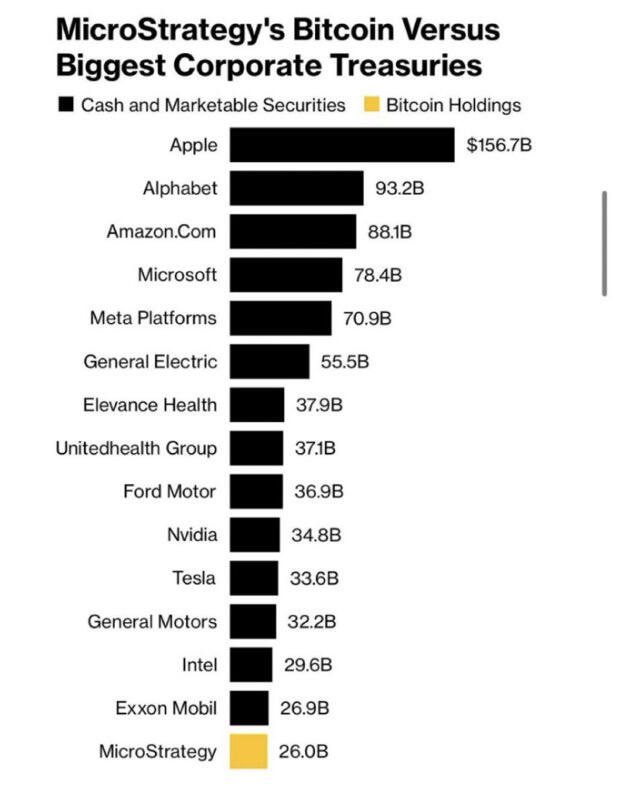f6c49e1b:89c41ac9
posted
16 hours ago
"Over these next few years #Bitcoin will not need any more evangelism. The real task of being a node in the social network of #bitcoin users lay in envisioning what the world is going to look like"
nostr:naddr1qq2nzvzj94x56emnvfg8v3j4wf2kzcjtvfvz6q3q76zu0wg5l8436nu66qaxwfekx0zz58l66s72dhcu0ur0lvd7q5lqxpqqqp65wx7ejhe
hodlcuban
posted
16 hours ago
Pardon, I don't follow
hodlcuban
posted
16 hours ago
Pardon, I don't follow
Pachorro
posted
16 hours ago
Respect ✊
Pachorro
reacted
16 hours ago
🤙
HODLr
posted
16 hours ago
You’re amazing. That’s what’s happening. Oh, and a lil bit o’ digital revolution.
Pachorro
posted
16 hours ago
And where is your privacy and anonymity?
5ea46480:450da5bd
posted
16 hours ago
You think that is cool? All i am thinking is this poor bit that needlessly gets shuffled all over the place among billions of transistors in an exercise of endless useless actions born out of all the abstraction layers and shitty implementation. Yet no1 notices because its happens with billions of actions per second.
HODLr
reacted
16 hours ago
🔥
melvincarvalho
posted
16 hours ago
That line is a psychological line. http is a decentralized protocol, tho some will argue that it is not. But if it is the parent protocol of nostr, so anything nostr can do, http can do, and more. So if you think nostr is decentralized then http must be decentralized.
It might be useful to use the term "sufficiently decentralized". The term has become a slogan and a cliche in modern s/w engineering, in any case.
You could look at it another way. If the main bluesky node went down it could be critical. If damus went down it would be a pretty bad situation in nostr. If one particular website goes down it doesnt matter too much. If any bitcoin node or miner goes down, it will barely be noticed. If one pubky or bittorrent node goes down, the system is resilient.
dbe0605a:f8fd5b2c
posted
16 hours ago
I pay with my node in Warsaw for stuff in El Salvador and Guatemala. No one can stop it. I got chills everytime I do this https://video.nostr.build/aab250f5b5e5636dcf7a3df960705c611238f4439b6f672967cac450108984d0.mp4
ac340a0f:4d3d1853
posted
16 hours ago
😀
Only fourteen companies in the S&P 500 hold more financial #assets than #MicroStrategy and MicroStrategy’s balance sheet is the only one that won’t depreciate in #value over time.
#Nostr #Bitcoin 

b16817e6:828dedea
reacted
16 hours ago
🤙
Salty Cracker
posted
16 hours ago
Day 70
1 mile
7m 32s
#pow
#runstr
#nosfit
Salty Cracker
posted
16 hours ago
Day 70
1 mile
7m 32s
#pow
#runstr
#nosfit
b22fef18:1bba6e1f
reacted
16 hours ago
🫂
dbe0605a:f8fd5b2c
reposted
16 hours ago
{"content":"still mind blowing to me that my lightning node sends me cryptographically verifiable receipts of cytographically verifiable transfers on a decentralized L2 network of computers that are on top of a cryptographically verifiable ledger built on exahashes of proof of work.\n\nwtf is even happening","id":"e4256c976592daa5c723b449c47984347f3e8eeb77be7b6a96e7e10699555a0f","created_at":1731805364,"tags":[],"pubkey":"32e1827635450ebb3c5a7d12c1f8e7b2b514439ac10a67eef3d9fd9c5c68e245","sig":"c3e79301a3fcf51f026b373244c337cd9eb91322b9e69a9f450791e485b5cbbe36bcabd3775913a8f55f4d80833f56f71807b4ae58debd01f0a7a620034778d0","kind":1}
dbe0605a:f8fd5b2c
reacted
16 hours ago
🫂
HODL
posted
16 hours ago
I believe this because I choose to believe it
And also because of the pikachu 

HODL
posted
16 hours ago
I believe this because I choose to believe it
And also because of the pikachu 

Nostralia
reacted
16 hours ago
🤙
hodlcuban
reacted
16 hours ago
🤙
MF_HODL
posted
16 hours ago
What is the line for “real” vs “not real” decentralization?
I always understood it as a system has to be decentralized “enough” to overcome censorship, system failures, etc. That’s mostly impossible to quantify until the system is put under pressure in a real world scenario… but it is possible to identify systems which by design are not decentralized.
aae4c84c:271a1b15
reacted
16 hours ago
+
3878d95d:f3b45a69
posted
16 hours ago
2019. And i’m waiting to see what happens when their B corp runs out of cash. 😉